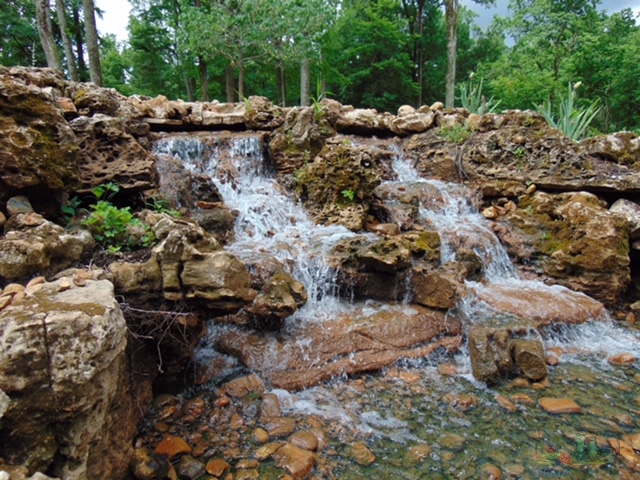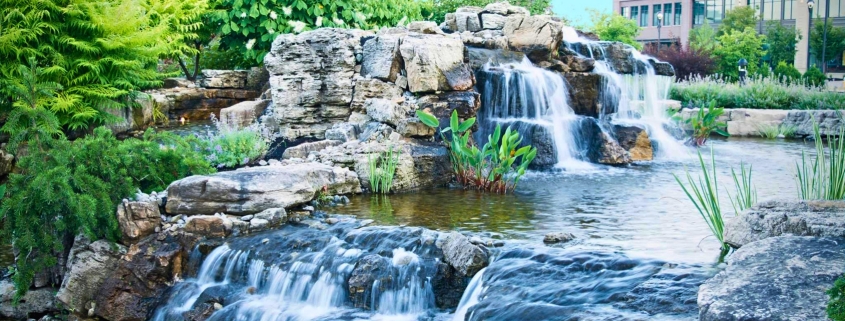How To Choose The Correct Pond Pump
Choosing a pump for your pond or fountain is a crucial step to ensure you maintain proper water movement. Failure to keep the water adequately circulated can result in stagnation, algae buildup, and mosquitoes. In addition, if you have fish, plants, or other aquatic life in your pond, you must keep the water healthy by evenly distributing the oxygen levels and other nutrients.
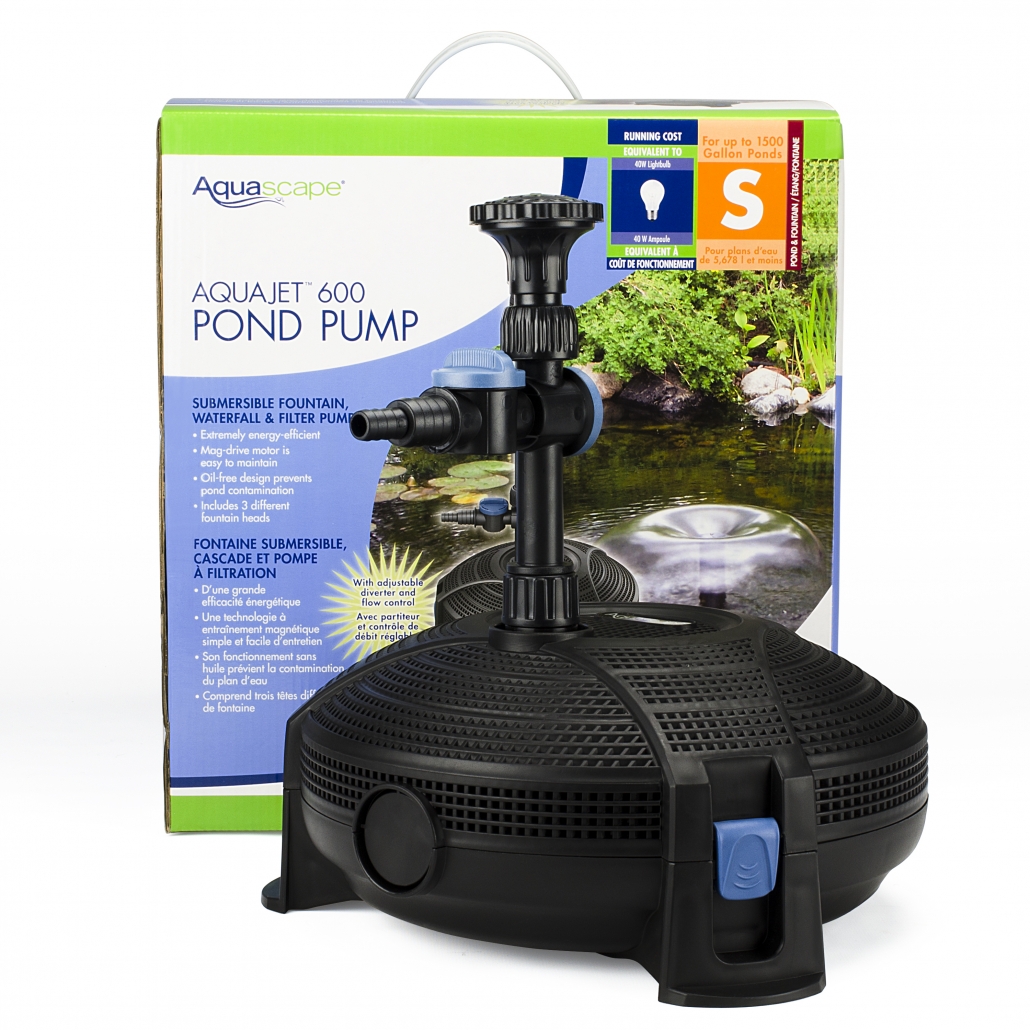
Types of Pond Water Pumps
There are two main types of pond water pumps: submersible and external (out-of-pond), also known as centrifugal pumps. Depending on the application, each pump offers specific advantages.
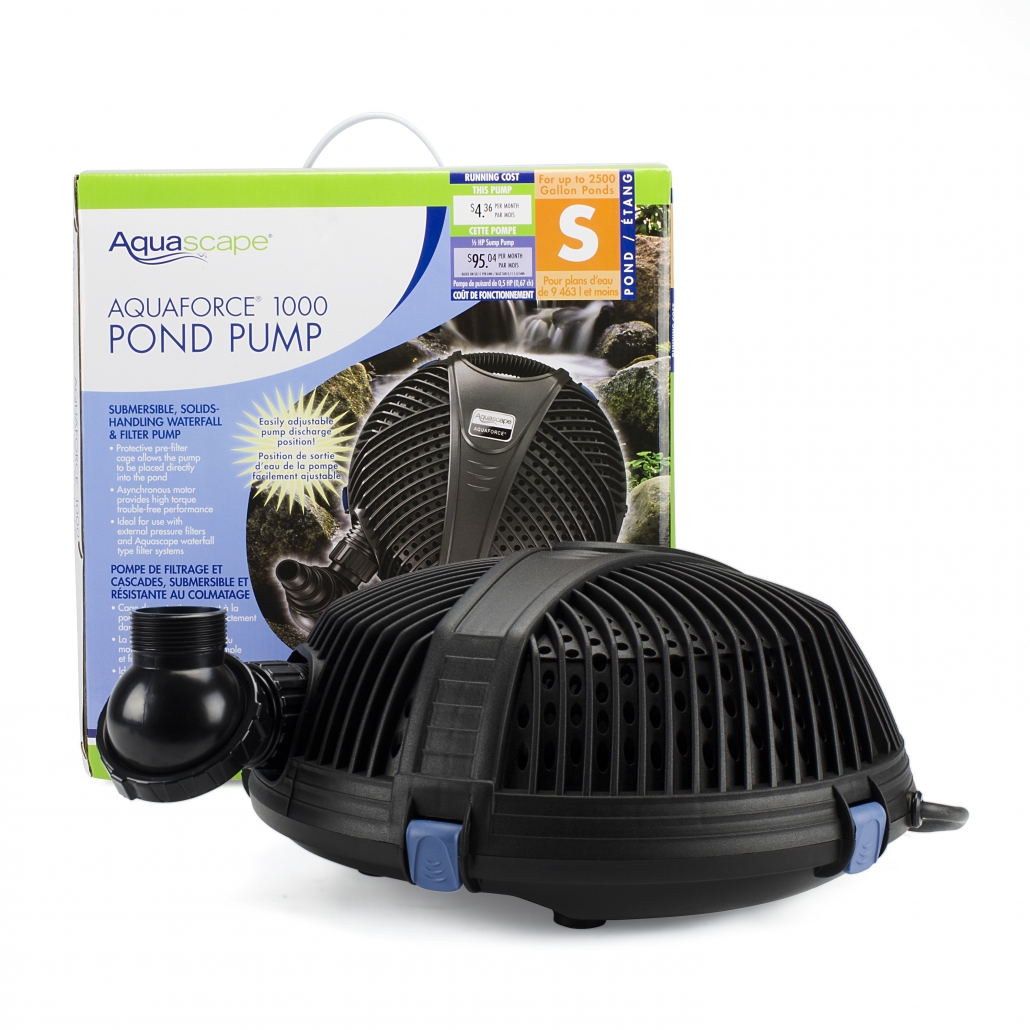
Submersible Pond Pumps
Submersible pumps are designed to be fully submerged underwater at the deepest part of the pond. They are placed directly into your pond or in a skimmer box or pond vault. Submersible pumps range in size from 50 to 5,000 gallons per hour. They are easy to install and are sometimes a more economical solution for smaller ponds (up to 1000 gallons of water). They are also quiet and can also be used to drain your pond. If you have fish or other aquatic life in your pond, you may want to consider a model that does not use oil because there is a danger of the pump seal breaking and oil coolant leaking into the water.
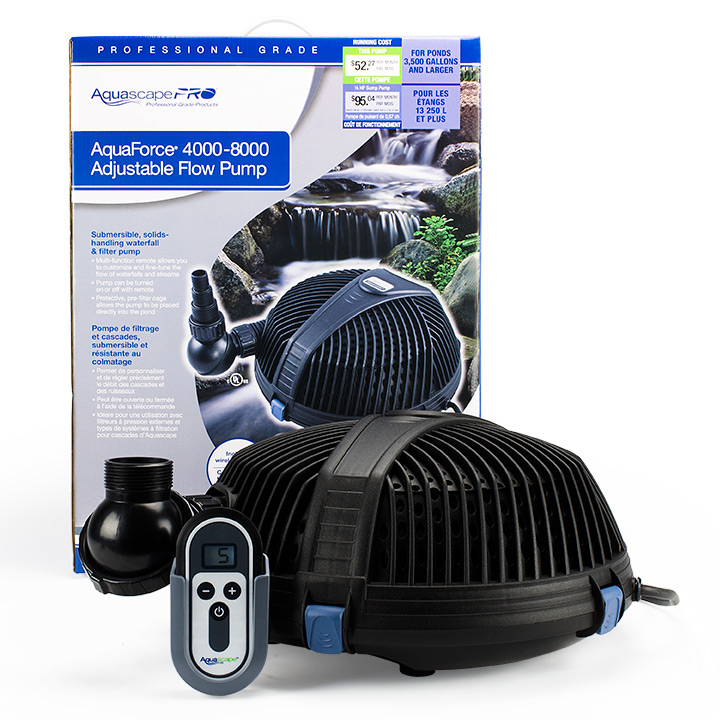
Centrifugal Pond Pumps
External or centrifugal pond pumps are a reliable, energy-efficient option. They are installed in a dry location near your pond. External pond water pumps are suitable for larger ponds (over 1000 gallons). Compared to a submersible pump, they are typically louder and more complicated to install; however, they are easier to maintain.
When selecting a pond pump, it’s essential to keep in mind that pumps have different cord lengths. Ensure the cord is long enough to go through the pond and plugin far away from the water. Some electrical codes specify that the outlet for water features must be at least 6 feet away from the water. Therefore, it is recommended that you avoid using an extension cord. However, if you must use one, make sure it’s suitable for outdoor use and plugged into a ground fault circuit interrupter (GFCI) so that it will immediately shut off if there is an overload.

How to Size a Fountain or Pond Pump
Pond pumps are sized by gallons per hour (GPH) at one foot of lift or height. Larger capacity pumps are rated by horsepower (HP). To determine the size pond pump, first, you need to calculate the volume of water in the pond. To calculate the volume of water in gallons, multiply the length x width x average depth x 7.5.
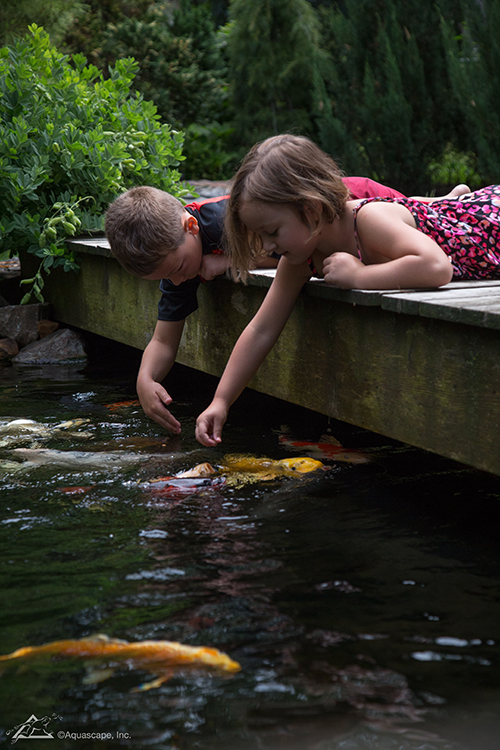
Water Circulation Factors
It is recommended that pond water is circulated at least once per hour. For example, if you have a 500-gallon pond, you need a pump that runs 500 gallons per hour at the discharge height. If your pond has a pressurized filter, you ideally want to turn the water approximately once every two hours. For example, if you have a 1000 gallon pond, you need a pond pump rated at a minimum of 500 GPH. If your pond has a skimmer or waterfall, the water should be turned approximately once every hour. Therefore, if you have an 1800 gallon pond, you will need an 1800 GPH rated pump.
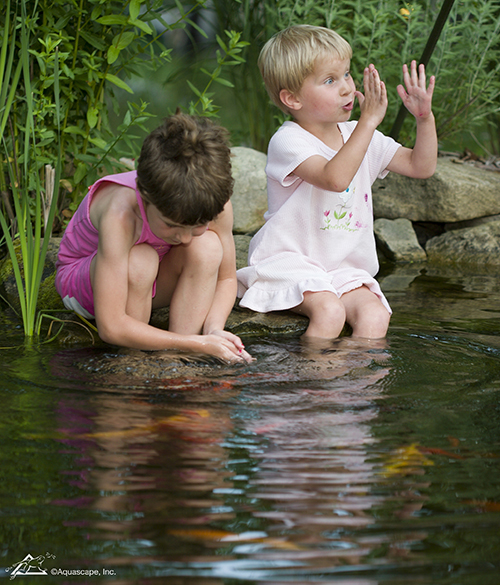
Calculating Head and Lift Height
Two of the most critical measurements in sizing a pond or fountain pump are the maximum head height rating and maximum lift. Head height means the vertical height the pump raises water above the surface of the pond. The pond fountain pump’s top height can lift the water to is called “Maximum Head” or “Max Head.” The “Head” is measured straight up from the water level of the pond. Its length then measures any horizontal/diagonal flow, and 1′ of “Head” added per 10′ of horizontal/diagonal distance. To calculate the lift, you need to measure how far the water in your fountain has to travel from the pump’s location in your rush to the top of the fountain where the water comes out. Then you need to select a pump that lifts higher than that measurement. For example, if that distance is 24”, than you will need a fountain pump that lifts at least 36” tall. The “maximum lift” is the maximum height that the pump will raise the water.
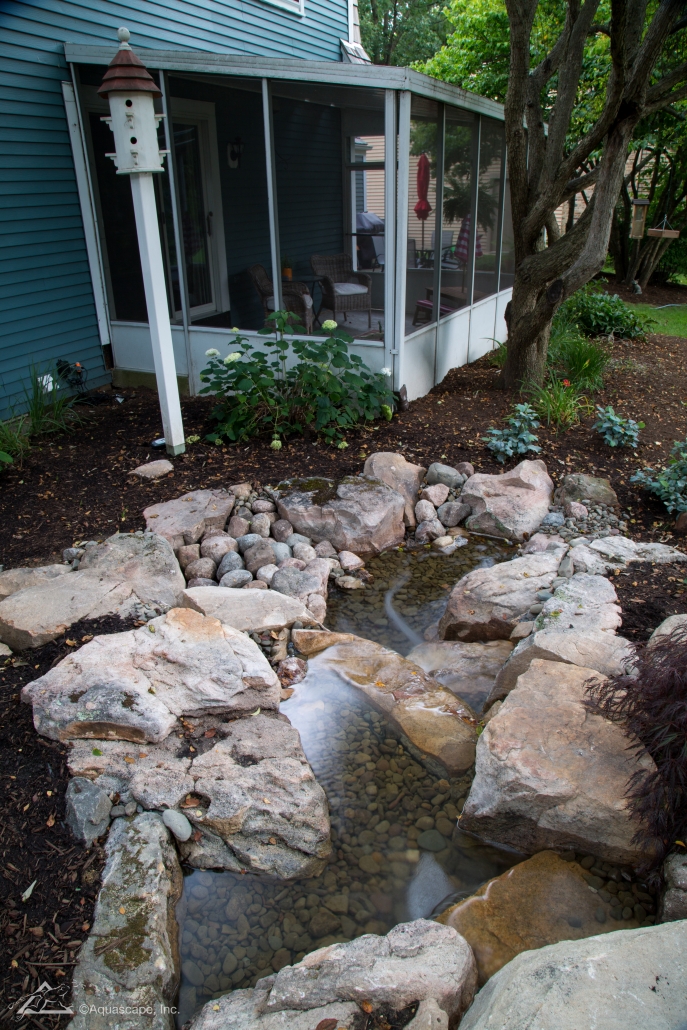
Selecting the Proper Pond Water Pump Tubing
It is also essential to use the correct tubing size because it directly affects the pond pump‘s maximum lift capability. If you use smaller tubing than specified, you will limit the pump’s maximum lift and the amount of water circulated.
Choosing the right pond water pump for your pond or fountain requires careful consideration and a little upfront research. However, doing so will go a long way toward keeping your water clean and healthy and your pump operating efficiently.
Aquascape Pumps: Powering Your Water Features
Aquascape pumps are at the heart of every successful water feature, providing the power needed to create a mesmerizing, ever-flowing display. These advanced pumps are engineered to deliver reliable performance, energy efficiency, and the flexibility required for various outdoor water installations—from tranquil ponds to dynamic waterfalls. Whether you’re a seasoned water garden enthusiast or a newcomer looking to enhance your landscape, Aquascape pumps offer the perfect blend of functionality and innovation. 💧
Unmatched Reliability and Performance
One of the standout benefits of Aquascape pumps is their proven reliability. Designed with high-quality components, these pumps are built to withstand the rigors of continuous operation. They deliver consistent water flow, ensuring that every waterfall, fountain, or pond in your garden operates smoothly and efficiently. This reliability is particularly important for maintaining a healthy aquatic ecosystem, as stable water circulation supports oxygenation and minimizes algae growth.
Energy Efficiency for Eco-Friendly Operation
In today’s eco-conscious world, energy efficiency is a top priority for any outdoor installation. Aquascape pumps are engineered to consume minimal energy while maximizing performance. Their advanced design allows you to enjoy vibrant water features without incurring high utility costs. This commitment to energy efficiency not only benefits your wallet but also contributes to a more sustainable and environmentally friendly landscape design.
Versatile Applications and Customization
Aquascape pumps are incredibly versatile, making them ideal for a wide range of water features. Whether you’re installing a small garden fountain or a multi-tiered waterfall, there is an Aquascape pump tailored to your specific needs. Their adjustable flow controls allow you to fine-tune the water movement, so you can achieve the desired visual and auditory effects in your outdoor space. This flexibility enables you to customize your water display, ensuring that every element harmonizes with your overall design vision.
Simplified Installation and Maintenance
Ease of installation and low maintenance requirements are key factors in the popularity of Aquascape pumps. With straightforward setup procedures and clear instructions, even those new to water feature installation can achieve professional results. Once installed, these pumps require minimal maintenance, allowing you more time to enjoy your water feature rather than worrying about upkeep. Periodic checks and simple cleaning routines are all that’s needed to keep the system running at peak performance.
Enhancing Outdoor Aesthetics
Beyond their functional benefits, Aquascape pumps play a crucial role in enhancing the overall aesthetics of your water feature. Their quiet operation ensures that the soothing sounds of flowing water remain undisturbed, creating a serene environment in your garden. Paired with carefully selected lighting and complementary landscaping, the consistent flow generated by these pumps transforms your outdoor space into a captivating retreat that delights the senses both day and night.
Final Thoughts
Aquascape pumps are a game-changer for modern water features, combining robust performance with energy-efficient design and versatile application. They provide the foundation for a dynamic, eco-friendly water display that not only enhances your landscape but also supports a thriving aquatic ecosystem. Embrace the power and precision of Aquascape pumps and watch your water garden come to life with effortless elegance. 😊
Outdoor Water Design
Outdoor water design is the art of transforming your garden or patio into a serene retreat where nature and technology blend seamlessly. Thoughtfully integrated water features create dynamic focal points, add soothing sounds, and set the mood for relaxation and entertaining. By merging artistic vision with practical design, you can craft a landscape that not only pleases the eye but also nurtures your well-being. 💧
Crafting a Vision
Every great water design project starts with a clear vision. Consider the ambiance you wish to create—do you imagine a tranquil pond that invites reflection, a playful fountain that enlivens a family space, or a modern waterfall that becomes the centerpiece of your landscape? Your vision will guide choices in layout, scale, and style, ensuring that each element contributes to a unified outdoor environment.
Key Components of Outdoor Water Design
1. Water Features as Focal Points:
The water element is the heart of your design. Whether you choose a small, intimate fountain or a large, cascading waterfall, the water feature should serve as a natural gathering point. It sets the tone for the rest of the space, drawing attention and anchoring your overall design. Energy-efficient systems like the Aquascape Ultra series provide reliable performance while maintaining an eco-friendly profile.
2. Integration with Landscaping:
Outdoor water design is most effective when the water feature is seamlessly integrated with the surrounding landscape. Incorporate natural materials such as stone, gravel, and native plants to create a harmonious transition between hardscape and softscape. This blend not only enhances the beauty of your installation but also supports local wildlife, contributing to a balanced ecosystem.
3. Lighting and Ambiance:
Strategic lighting is a game changer in outdoor water design. Installing low-voltage LED lights can accentuate the contours of your water feature and create dramatic shadows that evolve with the fading light. Whether you opt for subtle illumination that highlights gentle ripples or bold colors that transform your space into a nocturnal wonderland, lighting adds depth and dimension to your design.
4. Sustainable Design Practices:
Sustainability is a key consideration in modern outdoor water design. Recirculating water systems reduce waste and lower energy costs, while the use of native plants minimizes the need for chemical treatments. By investing in sustainable technology, you ensure that your water feature remains beautiful and functional with minimal environmental impact.
Bringing Your Design to Life
The success of your outdoor water design lies in the details. Begin by mapping out your space and selecting a location that maximizes both aesthetic appeal and practical functionality. Consider factors such as sunlight exposure, proximity to power sources, and the flow of foot traffic. Collaborate with landscape designers or water feature specialists to refine your vision and address technical challenges.
Invest in quality components that promise durability and low maintenance. Modern systems with automated controls and sensor-driven adjustments allow you to manage water flow and lighting effortlessly, so your outdoor retreat continues to impress long after installation.
Outdoor water design offers a unique opportunity to merge art, nature, and technology into a living, breathing masterpiece. By carefully selecting water features that complement your landscape, integrating sustainable practices, and utilizing smart lighting, you can create an inviting, dynamic space that adapts with the seasons and transforms your everyday environment. Embrace the beauty and innovation of outdoor water design, and let your garden become a sanctuary that refreshes both mind and spirit. 😊
Dynamic Water Features
Dynamic water features are designed to bring life and movement into your garden, transforming your outdoor space into an ever-evolving work of art. By incorporating kinetic water elements that adjust to the environment, you can create a vibrant atmosphere that captivates the senses and revitalizes your surroundings. From pulsating fountains to cascading waterfalls, these installations add an energetic flair that not only enhances visual appeal but also promotes a soothing ambiance. 💦
The Art of Motion in Water Design
Dynamic water features are all about movement. Unlike static water installations, these features use variable water flows, adjustable jets, and innovative design techniques to create an interactive display that changes throughout the day. Imagine a water display that gently transitions from a soft mist at dawn to a vigorous cascade during the day, and then shifts to a calming trickle as evening falls. This constant evolution mirrors the rhythm of nature and provides a continuously engaging experience for onlookers.
Key Elements That Define Dynamic Water Features
1. Variable Water Flow:
One of the most exciting aspects of dynamic water features is their ability to adjust water flow. This can be achieved through advanced pump systems—like those found in the Aquascape Ultra series—which allow you to control the intensity and rhythm of the water. Whether you desire a dramatic splash or a delicate ripple, these adjustable settings ensure that your water feature remains versatile and responsive.
2. Multi-Level Design:
Dynamic features often incorporate multiple levels or tiers to create a layered effect. Cascading water from different heights generates a mesmerizing interplay of light and movement, adding depth to the overall design. This multi-dimensional approach can transform a simple garden into a captivating visual narrative that evolves with the seasons.
3. Integrated Lighting:
Enhancing dynamic water features with integrated LED lighting is a popular way to extend their appeal into the evening. Programmable lighting systems can synchronize with water flow, producing a stunning display of color and movement after dark. The interplay of shifting hues and water dynamics creates an immersive experience that can be both dramatic and soothing.
The Benefits of Dynamic Water Features
Dynamic water features do more than just catch the eye—they create a multisensory experience that can reduce stress, promote relaxation, and even encourage wildlife. The sound of flowing water has been shown to create a calming atmosphere, while the ever-changing visual display keeps your outdoor environment lively and engaging. These features are also highly customizable, allowing you to tailor your installation to suit your aesthetic and functional preferences.
Moreover, the use of energy-efficient components in dynamic water features not only minimizes environmental impact but also reduces operating costs. Modern systems are designed with sustainability in mind, incorporating recirculating water and smart controls to optimize performance without wasting resources.
Bringing Dynamic Features to Life
When planning a dynamic water feature, consider how it will integrate with your overall landscape design. Think about focal points, the surrounding plant life, and how the water will interact with other elements in your garden. With thoughtful placement and careful planning, your dynamic water feature can serve as the centerpiece of your outdoor oasis, attracting attention and inspiring conversation among guests.
Dynamic water features offer an exciting way to infuse your outdoor space with energy, movement, and a touch of modern sophistication. By embracing the principles of motion and integration, you can create a water installation that not only enhances the beauty of your garden but also enriches your everyday experience. Let your creativity flow, and transform your space into a dynamic retreat that evolves with the rhythms of nature. 😊

 Meyer Aquascapes
Meyer Aquascapes